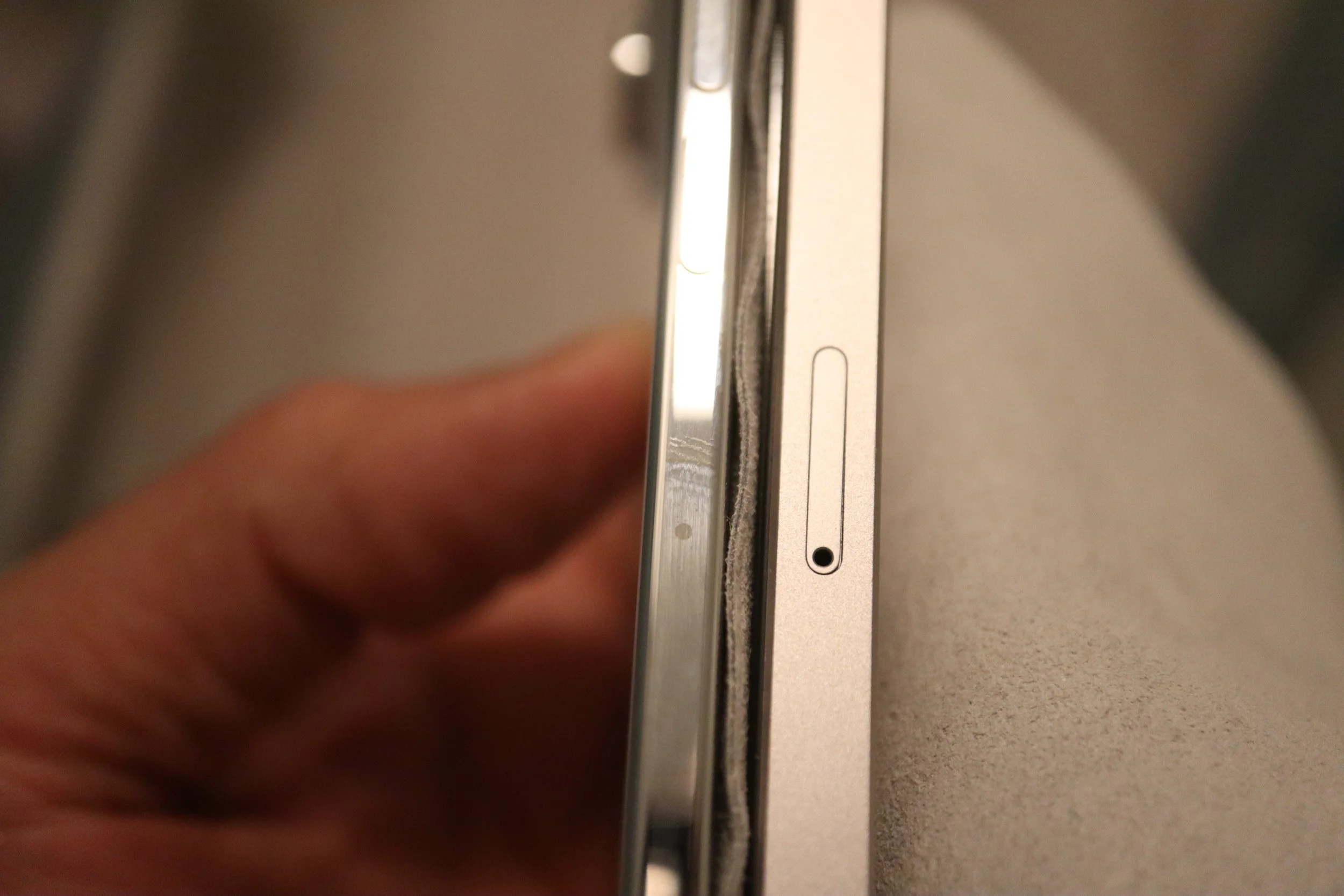In an alternate timeline, the iPhone Air was supposed to have a SIM tray, and Apple might have left a physical artifact on the device that proves it.
If you look right underneath the volume down button about 1.75cm below, you can see a faint cutout of a hole that looks like a SIM ejection slot. It’s very, very, very hard to see, and you have to have the proper lighting and some finger oils to really catch a glimpse of it. I found it one day by chance under the perfect set of lights, but it took me several days to find it again and actually photograph it properly.
Trying to clean the spot with a polishing cloth has the opposite effect and makes it impossible to see under the shiny reflective titanium. To try and find it, smudge the area with your finger oils, and apply your finger there for a few seconds so it gets some heat as well. Then lightly rub away the fingerprint with your hands and you will see where it looks like Apple would have put a SIM slot.
Maybe this is just some sort of tool marking for manufacturing purposes, but the story kind of fits. ShrimpApplePro posted a regulatory snapshot on September 7th that shows all the different battery capacities for this year's iPhones, and it included two different battery sizes for the iPhone Air.
After all iPhones were released and Apple confirmed an eSIM only iPhone Air, all of ShrimpApplePro’s battery specs matched exactly, with MacRumors confirming all battery capacities on September 19th.
The lone exception? A 3036mAh, 11.823Wh iPhone Air battery that never made it to mass production. Looks like there might have been some last-minute manufacturing decisions and Apple was confident enough to forego cutting out a SIM slot and recycled all of the lower capacity batteries.
iDrop News has some more details that helps explain the whole eSIM situation in China:
While most countries don’t have a legal requirement that devices have a physical SIM card slot, China is the notable exception. Although there’s no explicit law or regulation, the regulatory framework effectively creates a de facto restriction, as all smartphones sold in China must obtain a Network Access License (NAL) and a State Radio Regulation of China (SRRC) Type Approval Certificate from the Ministry of Industry and Information Technology (MIIT). The process is somewhat opaque, but most analysts believe the MIIT has created a barrier to eSIM adoption by refusing to approve any devices that don’t include a physical SIM.
In a more recent piece:
Nevertheless, during its Awe Dropping event, Apple seemed optimistic that the iPhone Air would launch in China alongside the rest of this year’s iPhone lineup later that same week, listing it among the same 63 countries that were getting the iPhone 17, iPhone 17 Pro, and iPhone 17 Pro Max.
It wasn’t until preorders opened on September 12 that Apple conceded that the iPhone Air wouldn’t be coming to mainland China, with the South China Morning Post reporting it had quietly updated its website to say that release information would be coming later.
At the time, the issue appeared to be mostly bureaucratic. Apple reportedly had all three state-owned carriers on board and ready to support the eSIM-only iPhone Air, but everyone was waiting for the MIIT to give the go-ahead to begin selling them. Apple could only say that it was “working closely with regulatory authorities to bring it to China as soon as possible.
Again, it all sounds very plausible that Apple was going back and forth whether to release a SIM-only version in China with a smaller battery. Considering how normal the current battery life is on the Air, a slightly smaller battery wouldn’t have been a deal breaker. We may never get the full story until years later when somebody writes a book with more details, or an Apple executive spills the beans in an interview.
If this slot was real (which I think it was), it would definitely have been a single SIM slot and not the dual-slot SIM card sandwich just because the device is stupid thin.
My original prediction wasn’t right, but I think I was damn close.



